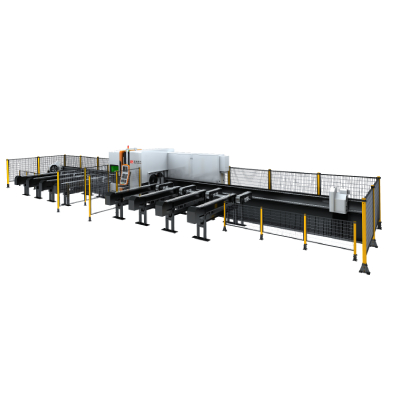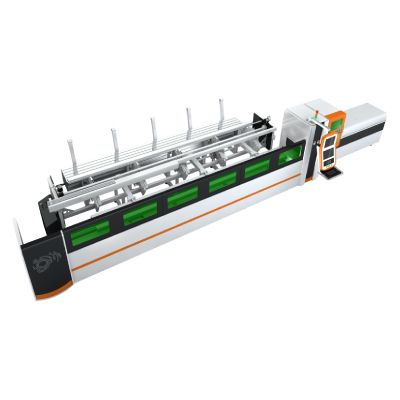In the fast-evolving landscape of manufacturing, technology plays a pivotal role in enhancing productivity, precision, and efficiency. Among the plethora of innovative tools and machinery, High Precision Metal Cutting Machines have emerged as a game-changer. These machines are designed to deliver exceptional accuracy in the cutting, shaping, and finishing of metal components, significantly transforming production processes across various industries.

Unlocking Precision and Efficiency: The Revolutionary Impact of High Precision Metal Cutting Machines on Modern Manufacturing
High precision metal cutting machines utilize advanced technology to ensure that the cutting process achieves ultra-fine tolerances and remarkable surface finishes. Employing techniques such as laser cutting, water jet cutting, and CNC (Computer Numerical Control) machining, these machines allow manufacturers to produce intricate designs that were once deemed impractical or impossible with traditional cutting methods.
One of the most significant advantages of high precision metal cutting machines is their ability to minimize material waste. Traditional cutting methods often lead to excessive scrap due to inaccuracies and the constraints of the machining process. However, with the precision offered by modern machines, manufacturers can achieve closer tolerances, thereby maximizing the use of raw materials. This reduction in waste not only contributes to cost savings but also aligns with sustainability goals, making operations more environmentally friendly.

Unlocking Precision and Efficiency: The Revolutionary Impact of High Precision Metal Cutting Machines on Modern Manufacturing
Additionally, the speed at which high precision cutting machines operate cannot be overlooked. With automation and enhanced programming capabilities, these machines can produce parts at an accelerated rate without compromising quality. The ability to run multiple processes in a single setup means that manufacturers can take on larger orders and meet tight deadlines without the fear of degradation in quality. This efficiency is vital in competitive markets, where time-to-market can significantly affect a company’s success.
Moreover, the versatility of high precision metal cutting machines is another factor that makes them invaluable. They can work with a broad range of materials, including aluminum, stainless steel, titanium, and precious metals. This adaptability allows manufacturers to diversify their production lines and cater to various industries such as aerospace, automotive, electronics, and construction. The ability to switch between different materials and cutting techniques with minimal downtime enhances the overall operational flexibility, making it easier for companies to respond to changing market demands.
Training and skilled labor play a crucial role in effectively utilizing high precision metal cutting machines. While the technology handles much of the precision aspect, operators must still possess a deep understanding of the machinery and its functions. As a result, manufacturers increasingly invest in training programs to ensure their workforce is equipped with the necessary skills to operate these sophisticated machines. Companies that prioritize employee training typically see heightened productivity levels and reduced error rates, further emphasizing the importance of human factors in the age of automation.
In addition to training, routine maintenance of high precision metal cutting machines is essential. Regular maintenance ensures that the machines operate at optimal performance levels and can significantly extend their lifespan. Businesses often implement scheduled maintenance checks, which include cleaning, lubrication, and parts replacement, to mitigate the risk of unexpected downtimes. Such preventative measures are critical not only for maintaining the machines themselves but also for ensuring the integrity and quality of the manufactured parts.
Furthermore, the data generated by high precision metal cutting machines can offer valuable insights into production efficiency and product quality. Manufacturers are increasingly leveraging data analytics to monitor machine performance, analyze trends, and streamline production processes. By utilizing this data, businesses can identify bottlenecks, optimize operations, and improve their decision-making strategies, ultimately leading to enhanced overall efficiency.

Unlocking Precision and Efficiency: The Revolutionary Impact of High Precision Metal Cutting Machines on Modern Manufacturing
In conclusion, High Precision Metal Cutting Machines represent a pivotal advancement in modern manufacturing. Their unparalleled accuracy, speed, versatility, and material efficiency set a new standard for production. By embracing this technology, manufacturers can not only enhance their operational capabilities but also position themselves competitively in a rapidly changing market landscape. As industries continue to evolve, those that harness the power of high precision cutting technologies will undoubtedly lead the way in innovation and productivity. Fiber Laser Metal Cutting Machine
